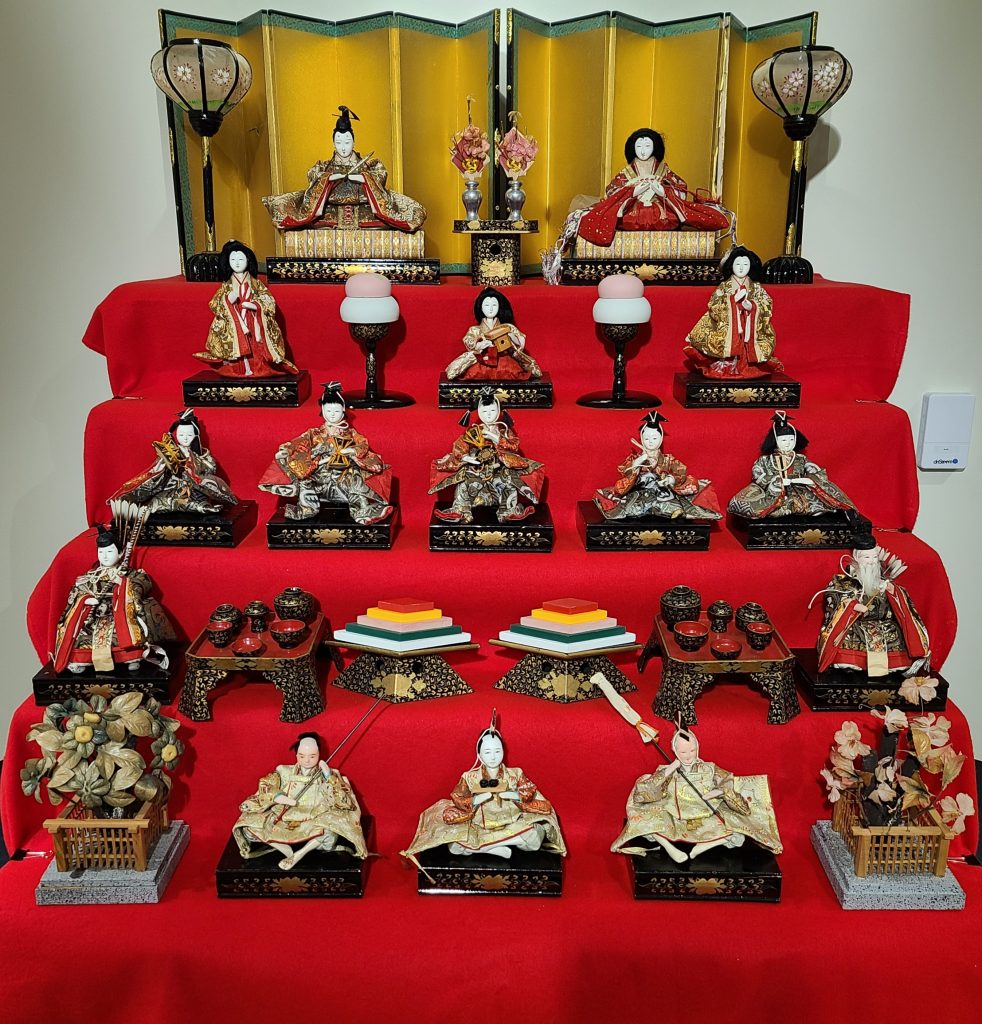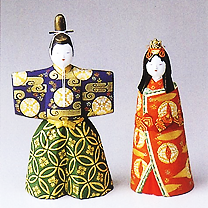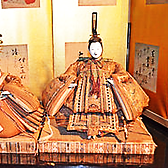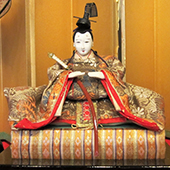The Hinamatsuri Doll Display

The dolls in a Hinamatsuri display represent the Imperial Couple (also known as Dairi-bina, or the Emperor and Empress) and their court attendants. Different kinds of food, drinks, plants, and furnishings are placed around the dolls to represent the kinds of offerings that would be made to royalty.
The dolls for a Hinamatsuri display can be arranged in a variety of ways. Families can choose from doll styles and accessories that match their personal tastes. However, some aspects of the display are more strictly proscribed by tradition. A traditional display is set up on tiered levels that look like steps. Often a display will have five or seven levels, but regardless of how many levels there are, the Imperial Couple is always placed on the top. They sit in front of a gold folding screen. Between them are vases of peach branches, and on either end are lampstands with paper lanterns.
On the second level, below the Imperial Couple, are the court ladies-in-waiting. These dolls represent the high-status women that attended the Empress. Between the ladies-in-waiting are tables of sweets. The third level is for the five musicians. Usually, the instruments are arranged in a specific order from left to right: taiko (stick drum), otsuzumi (large drum), kotsuzumi (small drum), fue (flute), and a singer who holds a sensu (fan). On the fourth level are the ministers of the left and right. The minister of the left is old, and placed to the right, while the minister of the right is younger, and placed to the left. Tables with covered bowls and hishi mochi (diamond-shaped rice cakes) are placed between these dolls. The fifth level has a mandarin orange tree to the far right, and a peach blossom tree to the far left. Between these trees are three interesting dolls: the drunken servants. The alcohol has effected each differently: one is sad, one is angry, and one is happy. Click on the image above to see a larger version.
Learn more about the dolls




